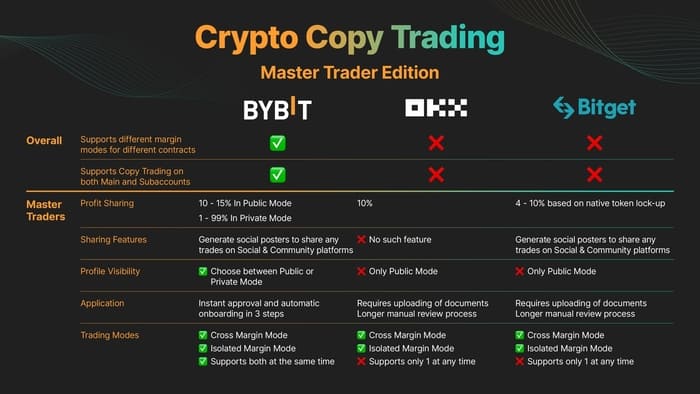Getting Started with Algo Trading
First up, we need to pick a programming language for our crypto bots—and of course we’re going with Python 🐍. It’s flexible, beginner‑friendly, and one of the top choices for algo trading. Next, we need to choose an exchange (bonus points if it offers a demo account).
So, what really matters for algo trading?
Honestly, the most important thing above all else with algo trading is just getting stuck in. Don’t overthink it—start playing around with the data, try out a few ideas, and see what happens. You’ll learn loads just by experimenting and tinkering. Half the battle is getting comfortable with the tools, and that only comes with doing. Apart from that, there are a few technical issues that are required.
1. Good data 📈
2. Wide range of symbols 🔀
3. Reasonable fees 💰
4. Variety of order types 📝
5. Tools to test our logic 🛠️
In this series, we’ll guide you step‑by‑step through 💻:
- 🔌Connecting to Bybit’s API for real‑time and historical market data
- 📊 Calculating popular technical indicators in Python
- ⏳ Backtesting your strategies on historical data
- 🚀 Deploying and managing live orders programmatically
- 🛡️ Implementing robust risk‑management and position‑sizing rules
Why Choose Bybit for Algo Trading
Bybit is a Singapore‑headquartered crypto derivatives exchange founded in 2018. With deep liquidity, 600+ futures contracts (plus spot and options markets) and up to 100× leverage, Bybit’s blazing‑fast matching engine (100 K TPS) and robust REST & WebSocket APIs make it the ideal playground for automating your trading strategies. Its user‑friendly interface, advanced order types and enterprise‑grade security (2FA, cold storage) let you deploy, monitor and scale your bots with confidence—so you can focus on building your next‑generation algo system.
Bybit is our top pick for Python‑powered algo trading thanks to its deep liquidity across 600+ futures contracts (plus spot and options), enterprise‑grade security, and blazing‑fast matching engine—all accessible via comprehensive REST & WebSocket APIs and an official Python SDK.
Another great reason to consider Bybit for your algo trading projects is its Copy Trading feature. This lets you become a principal trader — meaning other users on the platform can choose to automatically copy your trades in real time. 📈
As a lead trader, you get to trade with your own strategy, while Bybit handles the copying and trade execution for your followers. The best part? You earn a percentage of the profits generated for your copiers — it’s a great way to monetise your trading skills while helping others benefit from your strategy.
By the end, you’ll have a full toolkit for building, testing, and scaling your own Python trading bots on Bybit.
Exclusive Sign up Offer
💥 Limited‑Time Offer: If you’re serious about algo trading and ready to go live with real money, Codearmo readers can claim an exclusive sign‑up bonus on Bybit.
Why Bybit is a Great Choice for Algo-Traders
Bybit has some of the industry leading fees as shown in the table below. This is essential for algo traders as crypto bots will often be making 100s of trades a day and those seemingly small fees can add up really quick.
Bybit's API is Suited to Algo-traders
Bybit offers a powerful and developer-friendly API that's built with algorithmic traders in mind. Whether you're building fully automated strategies or simply making tools to help with your manual trading Bybit's API is a great choice.
The API supports both REST and WebSocket protocols. REST is optimized for order execution and account management, while WebSocket provides low-latency access to real-time market data — perfect for strategies that rely on fast updates and live order book depth.
Bybit offers SDKs in Python as well as other languages to ensure we don't have to spend too much time writing custom code.
One of the best things about Bybit, is the fact that they offer a range of historical data stretching back all the way to 2020. Whether it's open interest, long-short ratio or just OHLC bars, fetching data from Bybit's API really is a walk in the park.
What You’ll Need to Continue with this Series
Before diving deeper
1) Make sure you’ve got Python installed on your machine. If you are new to Python, maybe Vscode along with pyenv is a good place to start.
2) Decide whether you’ll be testing with a demo account or jumping in with a live one. Once that’s sorted, we’ll walk through how to generate your API key in the next part of the series.
3) Ensure you have an API key set up , which we will cover in the next installment of this series
🚀 Bybit Python Tools
A clean, modular toolkit for algo trading on Bybit using Python. Includes helper methods, API key management, and more.
View on GitHub


